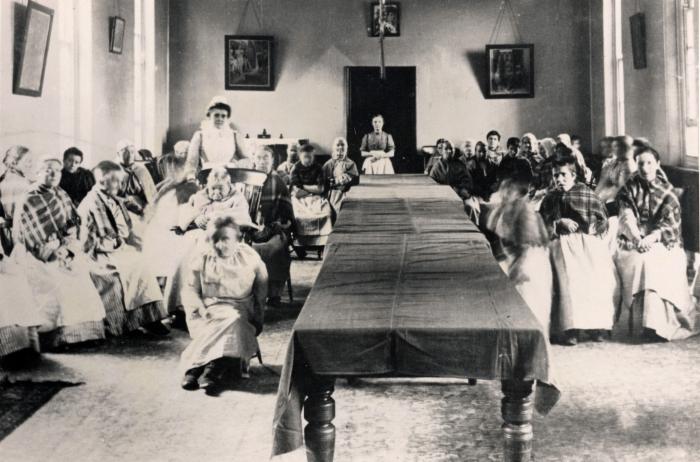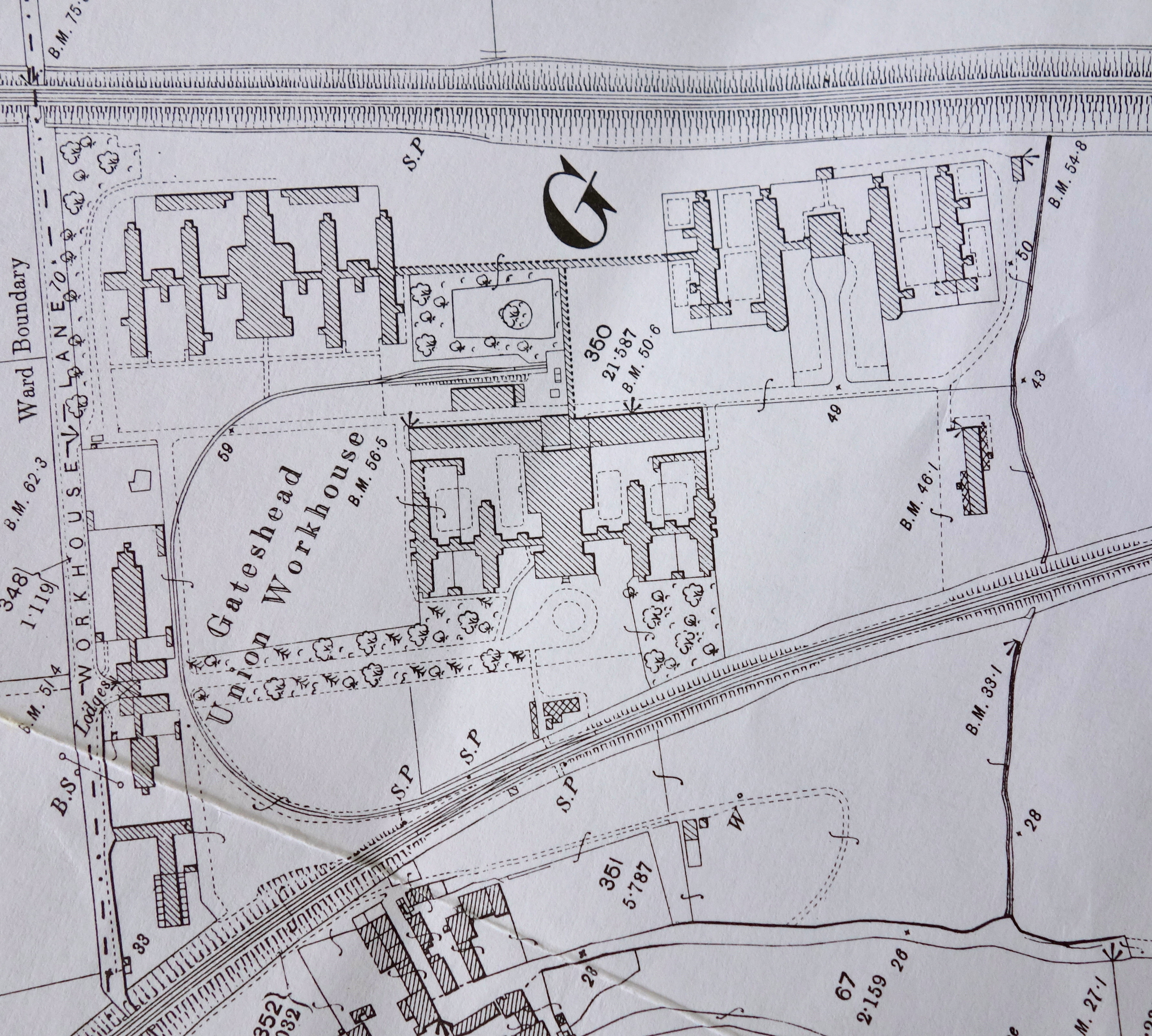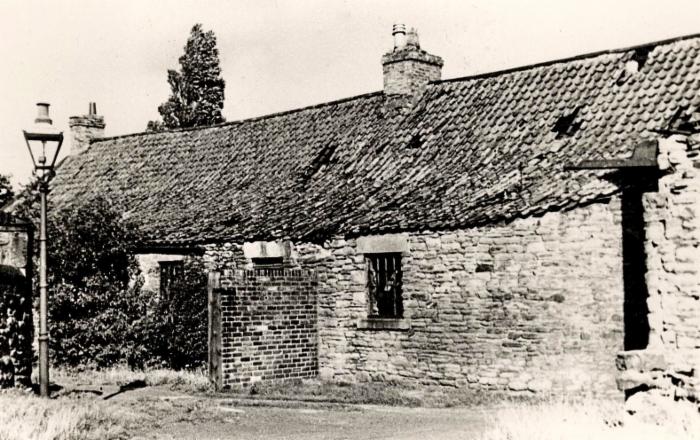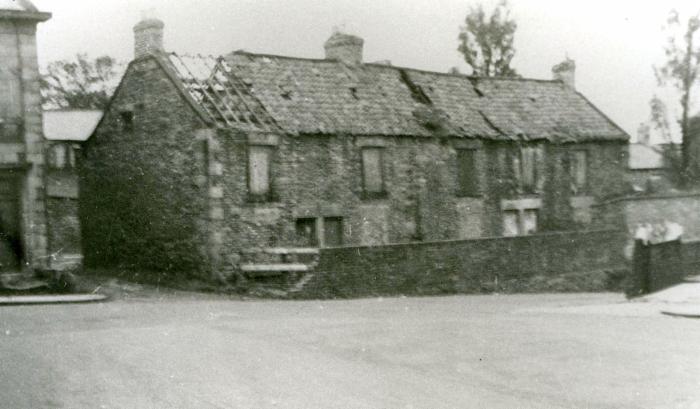
Workhouses
and Poor Houses

Inmates at Gateshead Union Workhouse, 1906
Photographer: Unknown
Date: 1906
Reference Number: GL002105
Item Description: Gateshead Union originally included five workhouses, at Gateshead, Heworth, Swalwell, Winlaton and Ryton Woodside. In the 1830s it was decided that the first two were sufficient for the needs of the Union and the remainder should be sold. A new workhouse was built to accommodate all the inmates on the site of Woodbine Street, off Coatsworth Road in Bensham. It soon became clear that this building was not adequate and after several extensions a new workhouse was proposed. After much debate a site was selected at High Teams Farm and opened in 1890. The workhouse later became known as the High Teams Institution and is pictured here in 1906. In 1948 it was renamed Fountain View.
The site is now Bensham Hospital

Ordnance Survey Map of 1894
Advertisement


Poor House, Winlaton
Photographer: Unknown
Date: Date Unknown
Reference Number: GL001112
Situated on North Street near Hanover Square and next to the houses called ‘The Groves’.
Under the old ‘factory’ system of Crowleys, both employees and employers paid into a superannuation scheme by which the workers received a pension of 5shillings ( 25p), when too old or infirm to work.The pensioner had to wear an armband with the inscription ‘Crowleys Poor’ written on it.In the 18c a skilled worker could earn 14s 2d (71p) per 80 hours. On the death of a workman,the widow either received a weekly allowance of 2s. 6d (12 1/2p) or was provided with employment at the factory,usually to make nail bags. After the Crowleys left Winlaton these benefits stopped until the Blacksmiths Friendly Society was formed in 1826.
The first mention of the poor-house is in 1788. An overseer and his assistant were appointed , a rate was levied for the relief of the poor and to look after the apprenticeship of children whose parents could not maintain them.The inmates had to be kept clean and comfortable and the overseers advertised for charitable donations of food, drink and clothing.The poor had to apply for relief and the Ryton minute book of 1830 records “That Martha Tweddle be sent to the Winlaton poor-house” but that “Thomas Forster receive no relief after coming out of prison”.Pauper funerals were to be conducted as economically as possible.
The system of poor relief came to an end when the Gateshead Poor Law Union was formed.The inmates of the Winlaton Poor House were removed to Gateshead Workhouse in 1837 and the red pantiled stone building was altered into dwelling houses.By 1955 the building was derelict and subsequently demolished early 1960’s.

The Poor House, North Street, Winlaton
Photographer: Unknown
Date: Unknown
Reference Number: GL005879
Lots more Gateshead Union Workhouse information
Workhouses Photos & Info brought to you by

The Felling Heritage Group
Photographer: Unknown
Date: 1906
Reference Number: GL002105
Item Description: Gateshead Union originally included five workhouses, at Gateshead, Heworth, Swalwell, Winlaton and Ryton Woodside. In the 1830s it was decided that the first two were sufficient for the needs of the Union and the remainder should be sold. A new workhouse was built to accommodate all the inmates on the site of Woodbine Street, off Coatsworth Road in Bensham. It soon became clear that this building was not adequate and after several extensions a new workhouse was proposed. After much debate a site was selected at High Teams Farm and opened in 1890. The workhouse later became known as the High Teams Institution and is pictured here in 1906. In 1948 it was renamed Fountain View.
The site is now Bensham Hospital
Ordnance Survey Map of 1894
Advertisement


Poor House, Winlaton
Photographer: Unknown
Date: Date Unknown
Reference Number: GL001112
Situated on North Street near Hanover Square and next to the houses called ‘The Groves’.
Under the old ‘factory’ system of Crowleys, both employees and employers paid into a superannuation scheme by which the workers received a pension of 5shillings ( 25p), when too old or infirm to work.The pensioner had to wear an armband with the inscription ‘Crowleys Poor’ written on it.In the 18c a skilled worker could earn 14s 2d (71p) per 80 hours. On the death of a workman,the widow either received a weekly allowance of 2s. 6d (12 1/2p) or was provided with employment at the factory,usually to make nail bags. After the Crowleys left Winlaton these benefits stopped until the Blacksmiths Friendly Society was formed in 1826.
The first mention of the poor-house is in 1788. An overseer and his assistant were appointed , a rate was levied for the relief of the poor and to look after the apprenticeship of children whose parents could not maintain them.The inmates had to be kept clean and comfortable and the overseers advertised for charitable donations of food, drink and clothing.The poor had to apply for relief and the Ryton minute book of 1830 records “That Martha Tweddle be sent to the Winlaton poor-house” but that “Thomas Forster receive no relief after coming out of prison”.Pauper funerals were to be conducted as economically as possible.
The system of poor relief came to an end when the Gateshead Poor Law Union was formed.The inmates of the Winlaton Poor House were removed to Gateshead Workhouse in 1837 and the red pantiled stone building was altered into dwelling houses.By 1955 the building was derelict and subsequently demolished early 1960’s.

The Poor House, North Street, Winlaton
Photographer: Unknown
Date: Unknown
Reference Number: GL005879
Lots more Gateshead Union Workhouse information
Workhouses Photos & Info brought to you by
The Felling Heritage Group